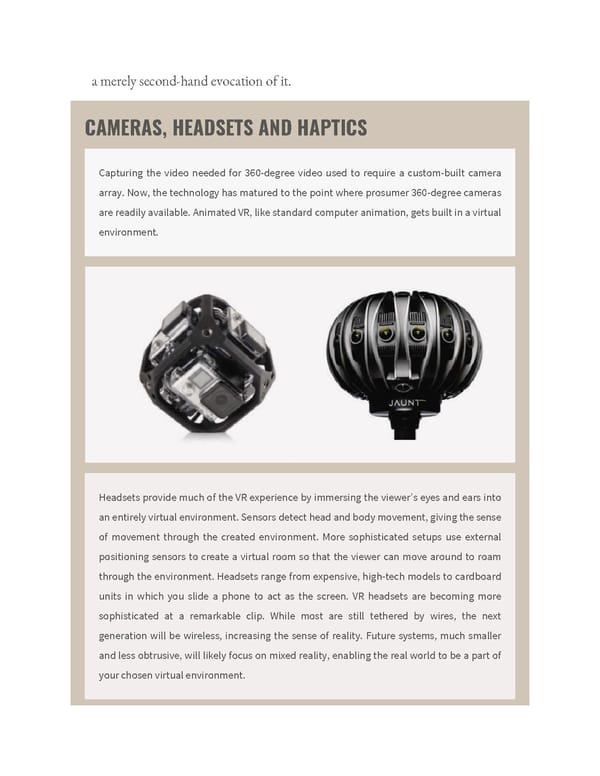a merely second-hand evocation of it. CAMERAS, HEADSETS AND HAPTICS Capturing the video needed for 360-degree video used to require a custom-built camera array. Now, the technology has matured to the point where prosumer 360-degree cameras are readily available. Animated VR, like standard computer animation, gets built in a virtual environment. Headsets provide much of the VR experience by immersing the viewer’s eyes and ears into an entirely virtual environment. Sensors detect head and body movement, giving the sense of movement through the created environment. More sophisticated setups use external positioning sensors to create a virtual room so that the viewer can move around to roam through the environment. Headsets range from expensive, high-tech models to cardboard units in which you slide a phone to act as the screen. VR headsets are becoming more sophisticated at a remarkable clip. While most are still tethered by wires, the next generation will be wireless, increasing the sense of reality. Future systems, much smaller and less obtrusive, will likely focus on mixed reality, enabling the real world to be a part of your chosen virtual environment.
 Ogilvy on Advertising in the Digital Age Page 272 Page 274
Ogilvy on Advertising in the Digital Age Page 272 Page 274